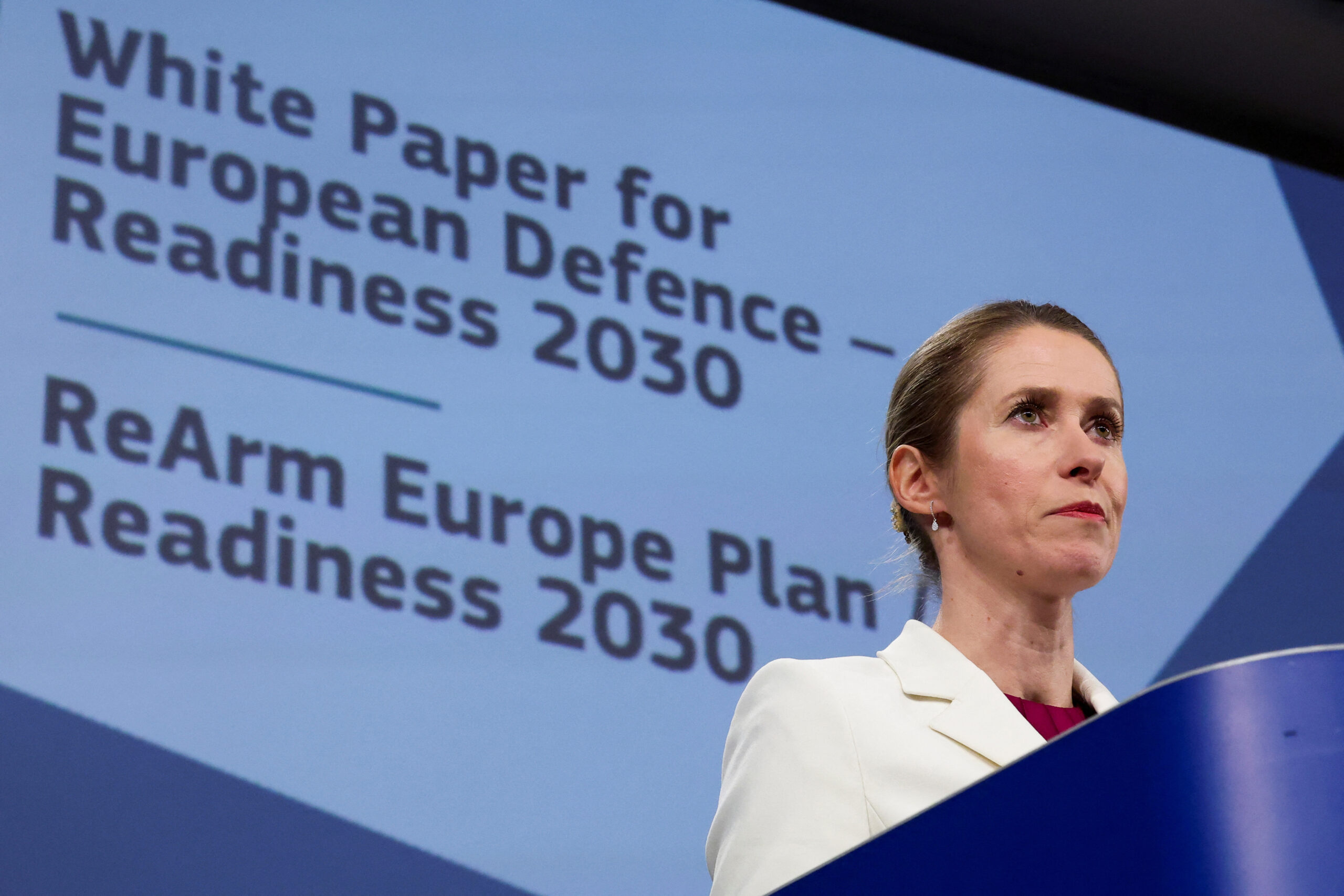Report on the Diplomatic Performance of EU High Representative Kaja Kallas in the Context of the Sustainable Development Goals
This report assesses the diplomatic approach of Kaja Kallas, the European Union’s High Representative for Foreign Affairs and Security Policy, and its alignment with the United Nations Sustainable Development Goals (SDGs), particularly SDG 16 (Peace, Justice and Strong Institutions) and SDG 17 (Partnerships for the Goals). The analysis focuses on her handling of major international conflicts and relationships with global powers.
Navigating International Conflicts in Pursuit of SDG 16: Peace, Justice and Strong Institutions
The role of the High Representative is central to the EU’s contribution to global peace and security, a core tenet of SDG 16. Ms. Kallas’s tenure has been defined by her response to major geopolitical crises, where her direct approach has yielded mixed results in promoting peaceful and inclusive societies.
The Russia-Ukraine Conflict: Upholding Sovereignty
Ms. Kallas’s reputation as a staunch critic of Russian aggression predates her appointment, stemming from her early warnings against engaging with the Putin administration. Her actions as High Representative reflect a commitment to upholding the principles of national sovereignty and international law, which are foundational to SDG 16.
- Her advocacy was instrumental in the EU’s plan to deliver two million artillery shells to Ukraine, with 80% of the commitment reportedly met.
- This policy is framed as a necessary measure to defend a sovereign state against aggression, thereby contributing to the long-term goal of peace and justice in the region.
The Israel-Hamas Conflict: Humanitarian Efforts and Institutional Challenges
In addressing the conflict in Gaza, Ms. Kallas’s office has focused on securing humanitarian access, a critical action that supports several SDGs in a crisis setting.
- SDG 2 (Zero Hunger) and SDG 3 (Good Health and Well-being): The European External Action Service (EEAS) reported significant aid delivery under her leadership, including:
- Entry of 2,904 aid trucks.
- A shipment of 1,200 metric tons of aid from Cyprus.
- Repairs to vital infrastructure, including the operational South Gaza desalination plant to improve water access (SDG 6: Clean Water and Sanitation).
- SDG 16 (Strong Institutions): Ms. Kallas has faced significant challenges in forging a unified EU position. Her proposal of ten potential sanctions against Israel to encourage compliance with international humanitarian law was hindered by a lack of consensus among member states, notably Germany and Italy. This highlights the difficulty in building effective and accountable institutions at the international level.
Challenges to SDG 17: Partnerships for the Goals
SDG 17 emphasizes the need for robust global partnerships to achieve sustainable development. Ms. Kallas’s diplomatic style has created friction with key international partners, complicating the collaborative efforts required to address global challenges.
Strained Relations with Global Powers
Effective diplomacy is crucial for maintaining the multi-stakeholder partnerships envisioned in SDG 17. However, interactions with several major powers have been strained.
- United States: Relations with the Trump administration have been tense, marked by a canceled meeting with the U.S. Secretary of State and public criticism from Ms. Kallas. This friction is seen as marginalizing her from key transatlantic negotiations, such as the EU-U.S. trade deal, undermining the potential for coordinated action on global goals.
- China and India: Ms. Kallas’s critical stance on nations maintaining economic ties with Russia has drawn public rebuke from both Beijing and New Delhi. A Chinese Foreign Ministry spokesperson accused her of stoking confrontation, while a former Indian foreign secretary described her as unqualified. These tensions create significant obstacles to building the broad-based partnerships necessary for global sustainable development.
Internal EU Coordination and Leadership Dynamics
The effectiveness of the EU as a global partner under SDG 17 depends on its ability to speak with a unified voice. Reports indicate that Ms. Kallas has been overshadowed by other European leaders, such as the European Commission President and the French President, on key foreign policy files. While her office prepares the groundwork for major initiatives, the public credit and diplomatic leadership are often attributed elsewhere, potentially weakening the institutional strength and coherence of the EU’s foreign policy apparatus.
Assessment and Outlook
High Representative Kaja Kallas demonstrates a strong commitment to the principles of sovereignty and justice outlined in SDG 16, particularly in her unwavering response to Russian aggression. Her efforts to deliver humanitarian aid in Gaza align directly with SDGs 2, 3, and 6. However, her candid and often confrontational diplomatic style presents significant challenges to fostering the global partnerships essential for SDG 17. The difficulty in achieving internal EU consensus further complicates her mandate. Her performance highlights a fundamental tension between a principled, values-based foreign policy and the pragmatic, consensus-driven diplomacy required to build the broad international cooperation needed to advance the global 2030 Agenda for Sustainable Development.
Analysis of Sustainable Development Goals in the Article
1. Which SDGs are addressed or connected to the issues highlighted in the article?
The article on Kaja Kallas’s role as the EU’s High Representative for Foreign Affairs touches upon several Sustainable Development Goals (SDGs) through its discussion of international conflicts, diplomacy, humanitarian aid, and global partnerships. The primary SDGs identified are:
- SDG 16: Peace, Justice and Strong Institutions: This is the most central SDG in the article. The text revolves around diplomatic efforts to manage and respond to major international conflicts, specifically the Russia-Ukraine war and the Israel-Hamas conflict. It discusses the role of international institutions like the European Union and NATO in promoting peace, security, and coordinated foreign policy among member states.
- SDG 2: Zero Hunger: The article directly connects to this goal through its detailed account of humanitarian aid being sent to Gaza. The efforts to strike a deal with Israel to allow more aid, including food supplies, into the region are aimed at alleviating the severe food crisis faced by the population, which is a core component of SDG 2.
- SDG 6: Clean Water and Sanitation: This goal is explicitly mentioned in the context of humanitarian relief in Gaza. The article notes that as part of the aid efforts, “repairs to vital infrastructure have improved,” and specifically that “water access in the South Gaza desalination plant is also operational.” This highlights a direct action towards restoring access to clean water.
- SDG 17: Partnerships for the Goals: The entire article is an analysis of international cooperation and partnerships. It examines the EU’s diplomatic relationships with the United States, China, and India, the functioning of the NATO alliance, and the challenges of coordinating policy among 27 EU member states. Discussions about trade deals, sanctions, and joint aid efforts all fall under the umbrella of strengthening global partnerships.
2. What specific targets under those SDGs can be identified based on the article’s content?
Based on the issues discussed, several specific SDG targets can be identified:
- Target 16.1: Significantly reduce all forms of violence and related death rates everywhere.
- The article’s focus on the Russia-Ukraine and Israel-Hamas conflicts directly relates to this target. Diplomatic actions, such as providing military aid to Ukraine (“delivered 80 percent of a proposed 2 million artillery shells”) and negotiating humanitarian access in Gaza, are efforts aimed at managing and ultimately reducing the violence and its impact on civilians.
- Target 16.A: Strengthen relevant national institutions, including through international cooperation, for building capacity at all levels… to prevent violence.
- The EU’s role, coordinated by Kallas, in formulating a common foreign policy and providing military and financial support to Ukraine is a clear example of international cooperation aimed at strengthening a nation’s capacity to defend itself against aggression. The formation of the “coalition of the willing” to help Ukraine also aligns with this target.
- Target 2.1: By 2030, end hunger and ensure access by all people… to safe, nutritious and sufficient food all year round.
- The EU’s diplomatic success in striking a deal with Israel for the “provision of more aid to Gaza” directly addresses this target. The article details the delivery of aid, including a ship carrying “1,200 [metric] tons of aid,” which is intended to provide food and other essential supplies to a population in a crisis zone.
- Target 6.1: By 2030, achieve universal and equitable access to safe and affordable drinking water for all.
- The article’s statement that “water access in the South Gaza desalination plant is also operational” as a result of aid efforts is a direct reference to progress on this target, highlighting the importance of restoring critical infrastructure for clean water in a conflict area.
- Target 17.16: Enhance the global partnership for sustainable development, complemented by multi-stakeholder partnerships…
- The article extensively discusses the complexities of managing global partnerships. This includes Kallas’s strained ties with the Trump administration, challenges in relations with China and India, and efforts to maintain unity within the EU and NATO. The successful push for NATO members to “up their defense spending” and the EU-US trade deal are concrete examples of actions within these partnerships.
3. Are there any indicators mentioned or implied in the article that can be used to measure progress towards the identified targets?
Yes, the article provides several specific, quantifiable, and qualitative indicators that can be used to measure progress towards the identified targets:
- Indicator for Humanitarian Aid (Targets 2.1, 6.1): The article provides precise figures on the amount of aid delivered to Gaza.
- “2,904 trucks have entered” the region.
- A ship carrying “1,200 [metric] tons of aid departed from Limassol, Cyprus.”
- The operational status of the “South Gaza desalination plant” serves as a qualitative indicator of restored access to clean water.
- Indicator for Military and Defense Cooperation (Target 16.A): The article quantifies the military support provided to Ukraine.
- The EU has “delivered 80 percent of a proposed 2 million artillery shells to Ukraine.” This is a clear metric of the commitment to strengthening Ukraine’s defense capabilities.
- Indicator for International Partnerships and Economic Policy (Target 17.16): The article points to specific policy actions and agreements.
- The fact that European Commission President Ursula von der Leyen has “struck a trade deal with the United States” is an indicator of a functioning, albeit sometimes tense, partnership.
- The proposal of “a set of 10 options for sanctions” against Israel, including the “suspension of preferential tariffs,” indicates the use of economic tools to achieve diplomatic and humanitarian objectives.
- NATO members being convinced to “up their defense spending” is a measurable indicator of the strengthening of the military alliance.
4. Summary Table of SDGs, Targets, and Indicators
| SDGs | Targets | Indicators |
|---|---|---|
| SDG 16: Peace, Justice and Strong Institutions |
|
|
| SDG 2: Zero Hunger |
|
|
| SDG 6: Clean Water and Sanitation |
|
|
| SDG 17: Partnerships for the Goals |
|
|
Source: foreignpolicy.com







